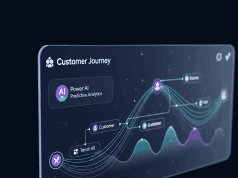In today’s fast-paced digital landscape, marketers face the challenge of navigating a myriad of tools and platforms to optimize their strategies and drive growth. A well-crafted marketing technology (martech) stack can be transformative, enabling organizations to enhance their marketing efforts, streamline operations, and improve customer experiences. Here’s how to build the ultimate martech stack and the essential tools to consider.
What is a Martech Stack?
A martech stack is a collection of marketing technologies that work together to improve marketing efficiency, foster collaboration, and enhance customer engagement. The right tools can automate repetitive tasks, provide valuable insights through analytics, and facilitate effective communication with audiences.
Key Components of a Martech Stack
To build an effective martech stack, it’s crucial to understand its core components:
Customer Relationship Management (CRM)
- Tools: Salesforce, HubSpot, Zoho
- Function: CRMs centralize customer data, track interactions, and manage relationships. This helps in personalizing marketing strategies based on customer behavior and preferences.
Marketing Automation
- Tools: Marketo, Pardot, ActiveCampaign
- Function: These platforms automate repetitive tasks such as email marketing, social media posting, and ad management. They also allow for segmentation and tailored messaging, improving engagement rates.
Content Management System (CMS)
- Tools: WordPress, Drupal, Squarespace
- Function: A CMS helps manage and publish content easily. It’s essential for maintaining a dynamic online presence, allowing marketers to create, edit, and optimize content without needing extensive technical skills.
Analytics and Data Visualization
- Tools: Google Analytics, Tableau, Looker
- Function: Analytics platforms track website traffic, user behavior, and campaign performance. Visualization tools help in interpreting complex data and deriving actionable insights, fostering data-driven decision-making.
Social Media Management
- Tools: Hootsuite, Buffer, Sprout Social
- Function: These tools enable marketers to schedule posts, monitor engagement, and analyze social media performance across multiple platforms, ensuring a cohesive social strategy.
Email Marketing
- Tools: Mailchimp, SendinBlue, Constant Contact
- Function: Email marketing platforms facilitate targeted communications. Segmentation allows for personalized outreach, which can significantly enhance user engagement.
Search Engine Optimization (SEO) Tools
- Tools: SEMrush, Ahrefs, Moz
- Function: These tools assist in optimizing content for search engines, helping improve organic visibility and driving traffic to your site through keyword research, on-page SEO, and backlink analysis.
Ad Tech
- Tools: Google Ads, Facebook Ads Manager, AdRoll
- Function: These platforms manage paid advertising campaigns, enabling marketers to reach specific audiences through targeted ad placements designed to drive conversions.
Customer Experience (CX) Tools
- Tools: Zendesk, Intercom, Qualtrics
- Function: CX tools help monitor and enhance customer satisfaction through feedback systems, support functions, and engagement metrics, ultimately leading to loyalty and retention.
- Collaboration Tools
- Tools: Slack, Trello, Asana
- Function: Facilitating teamwork and communication, these tools ensure that marketing teams can collaborate effectively, share ideas, and track project progress.
Steps to Build Your Martech Stack
1. Define Your Objectives
Before diving into tool selection, clearly outline your marketing goals. Whether it’s increasing brand awareness, generating leads, or improving customer retention, your objectives will shape your stack.
2. Assess Existing Tools
Review the tools currently in use within your organization. Identify gaps in functionality, effectiveness, and integration that need to be addressed.
3. Research and Evaluate Tools
Investigate potential solutions based on your objectives and existing gaps. Look for tools that offer seamless integration, user-friendly interfaces, and scalability.
4. Prioritize Integration
Ensure that the selected tools can integrate with one another efficiently. An integrated stack prevents siloed data and promotes a holistic view of marketing efforts.
5. Monitor Performance
Once implemented, continuously monitor the effectiveness of your martech stack. Leverage analytics and feedback to assess performance and make necessary adjustments.
6. Stay Updated
Marketing technology is ever-evolving. Regularly evaluate new tools and emerging trends to keep your stack optimized and aligned with market demands.
Conclusion
Building the ultimate martech stack is not a one-time effort; it’s an ongoing process of evaluation and adaptation. By selecting the right mix of tools, organizations can streamline their marketing functions, enhance customer engagement, and ultimately drive business growth. In a world where data is king, a powerful martech stack can be the difference between a successful marketing strategy and one that falls short. Embrace the technology and transform your marketing strategy today!









